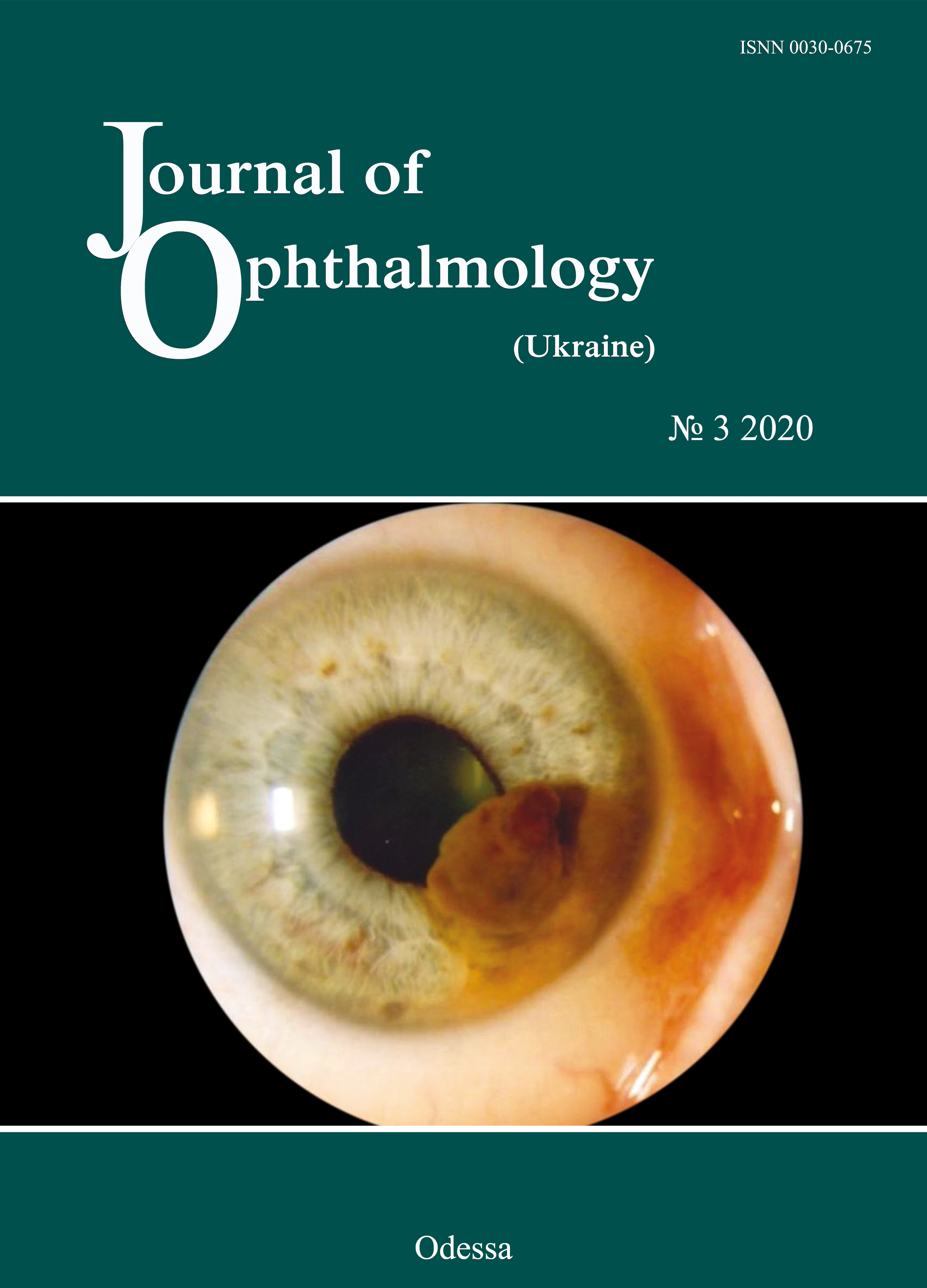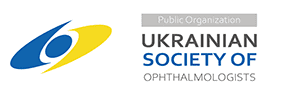Assessing quality of life in patients with ocular disturbances who underwent surgery for non-functioning pituitary adenoma
DOI:
https://doi.org/10.31288/oftalmolzh202033741Keywords:
non-functioning pituitary adenoma, ocular disturbances, oculomotor disturbances, quality of life scaleAbstract
Background: Ocular disturbances play a major role in the clinical course of non-functioning pituitary adenoma (NFPA). Partial or complete loss of sight affects patient quality of life (QoL), leading to increased dependence and poor performance; in addition, it affects the patient’s level of social adaptation. Developing a QoL questionnaire for patients with NFPA having ocular disturbances will allow for longitudinal monitoring of a patient’s condition and assessing quality of provided care.
Purpose: To develop and implement a method for assessing quality of life in patients with ocular disturbances who underwent surgery for non-functioning pituitary adenoma.
Material and Methods: We retrospectively reviewed the results of diagnostic studies and treatment outcomes among 100 patients with NFPA having ocular disturbances who received treatment at the Transsphenoidal Neurosurgery Department, Romodanov Neurosurgery Institute, during the period from 2017 through 2018. Patients underwent clinical-and-neurological, ophthalmological, otoneurological and neuroimaging examinations. We developed ocular-disturbance score assessment method and QoL scale for patients with ocular disturbances involving a number of indices related to ophthalmological symptoms, as well as to physical, psychic and social status of specific patients.
Results: The QoL scale has two subscales, subscale A (15 questions with each question having three possible responses) and subscale B (5 questions with each question having four possible responses), with the questions answered by the patient and the doctor, respectively. With the testing completed, total scores are calculated. A total QOL score of 0–15 is considered a poor (or low) QoL; 16–30, a moderate (or good) QoL; and 31–45, a high QoL. Treatment outcome monitoring and assessment of QoL over time for patients with NFPA having ocular disturbances can be performed by comparison of total pre-treatment and post-treatment scores. Not only is the extent of injury to the optic and oculomotor nerves assessed, but also the impact of physical handicap on the patient’s activities and on his or her functional abilities.
Conclusion: Implementing of the method for assessing the quality of life in patients with ocular disturbances with the help of the scale will allow for longitudinal condition monitoring in the course of treatment for patients with NFPA, making it possible to objectify treatment outcomes.
References
1.Abouaf L, Vighetto A, Lebas M. Neuro-ophthalmologic exploration in non-functioning pituitary adenoma. Ann Endocrinol (Paris). 2015; 76(3):210-9. https://doi.org/10.1016/j.ando.2015.04.006
2.Lee IH, Miller NR, Zan E, Tavares F, Blitz A, Sung H, et al. Visual Defects in Patients With Pituitary Adenomas: The Myth of Bitemporal Hemianopsia. AJR Am J Roentgenol. 2015 Nov;205(5): W512-8.https://doi.org/10.2214/AJR.15.14527
3.Kan E, Kan EK, Atmaca A, Atmaca H, Colak R. Visual field defects in 23 acromegalic patients. Int Ophthalmol. 2013 Oct;33(5):521-5.https://doi.org/10.1007/s10792-013-9733-7
4.Ogra S, Nichols AD, Stylli S, Kaye AN, Savino PJ, Danesh-Meyrr HV. Visual acuity and pattern of visual field loss at presentation in pituitary adenoma. J Clin Neurosci. 2014; 21(5):735-40.https://doi.org/10.1016/j.jocn.2014.01.005
5.Kim SH, Lee KC, Kim SH. Cranial nerve palsies accompanying pituitary tumour. J of Clinical Neurosci. 2007 Dec;14(12): 1158-62.https://doi.org/10.1016/j.jocn.2006.07.016
6.Chuang CC, Chen E, Huang YC, Tu PH, Chen YL, Pai PC. Surgical outcome of oculomotor nerve palsy in pituitary adenoma. J Clin Neurosci. 2011 Nov;18(11):1463-8.https://doi.org/10.1016/j.jocn.2011.02.041
7.Hage R, Eshraghi SR, Oyesiku NM, Ioachimescu AG, Newman NJ, Biousse V, et al. Third, fourth, and sixth cranial nerve palsies in pituitary apoplexy. World Neurosurg. 2016 Oct;94:447-452.https://doi.org/10.1016/j.wneu.2016.07.026
8.Nishimura M, Kurimoto T, Yamagata Y, Ikemoto H, Arita N, Mimura O. Giant pituitary adenoma manifesting as homonymous hemianopia. Jpn J Ophthalmol. 2007 Mar-Apr;51(2):151-3.https://doi.org/10.1007/s10384-006-0419-9
9.Kitthaweesin K, Ployprasith C. Ocular manifestations of suprasellar tumors. J Med Assoc Thai. 2008; 91(5):711-5.
10.World Health Organization. The World Health Organization Quality of Life assessment (WHOQOL): position paper from the World Health Organization. Soc Sci Med. 2005; 41(10):1403-9.https://doi.org/10.1016/0277-9536(95)00112-K
11.Johnson MD, Woodburn CJ, Vance ML. Quality of life in patients with a pituitary adenoma. Pituitary. 2003 Sep;6(2):81-7.https://doi.org/10.1023/B:PITU.0000004798.27230.ed
12.Aaronson NK. Quality of life: what is it? How should it be measured? Oncology (Williston Park). 1988 May;2(5):69-76, 64.
13.Mangione CM, Lee PP, Gutierrez PR, Spritzer K, Berry S, Hays RD. Development of the 25-Item National Eye Institute Visual Function Questionnaire. Arch Ophthalmol. 2001; 119(7):1050-8.https://doi.org/10.1001/archopht.119.7.1050
14.Wolf A, Goncalves S, Salehi F, Bird J, Cooper P, Van Uum S, et al. Quantitative evaluation of headache severity before and after endoscopic transsphenoidal surgery for pituitary adenoma. J Neurosurg. 2017; 127(2):409-16.https://doi.org/10.3171/2016.7.JNS16200
15.Makarenko OV, Kryvoviaz OV, Kryvoviaz SO. [Assessment of the quality of life in patients with primary open-angle glaucoma and approaches to rational pharmacotherapy in this pathology]. Ratsionalna farmakoterapiia. 2016; 2(39): 32-40. Ukrainian.
16.Muslimova ZR. [Rehabilitation treatment of patients with ocular disturbances after removal of tumors of the chiasm and sellar region]. Thesis for the degree of Cand Sc (Med). St Petersburg; 2017. Russian.
Downloads
Published
How to Cite
Issue
Section
License
Copyright (c) 2025 К. С. Єгорова, О. Є. Скобська, В. М. Жданова, М.О. Гук

This work is licensed under a Creative Commons Attribution 4.0 International License.
This work is licensed under a Creative Commons Attribution 4.0 International (CC BY 4.0) that allows users to read, download, copy, distribute, print, search, or link to the full texts of the articles, or use them for any other lawful purpose, without asking prior permission from the publisher or the author as long as they cite the source.
COPYRIGHT NOTICE
Authors who publish in this journal agree to the following terms:
- Authors hold copyright immediately after publication of their works and retain publishing rights without any restrictions.
- The copyright commencement date complies the publication date of the issue, where the article is included in.
DEPOSIT POLICY
- Authors are permitted and encouraged to post their work online (e.g., in institutional repositories or on their website) during the editorial process, as it can lead to productive exchanges, as well as earlier and greater citation of published work.
- Authors are able to enter into separate, additional contractual arrangements for the non-exclusive distribution of the journal's published version of the work with an acknowledgement of its initial publication in this journal.
- Post-print (post-refereeing manuscript version) and publisher's PDF-version self-archiving is allowed.
- Archiving the pre-print (pre-refereeing manuscript version) not allowed.












